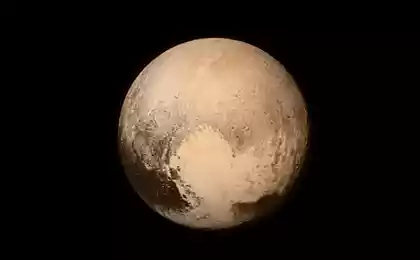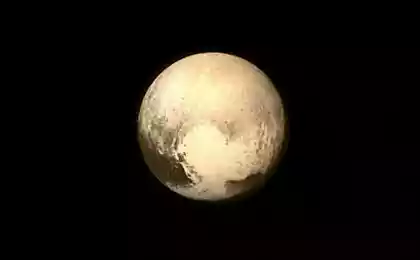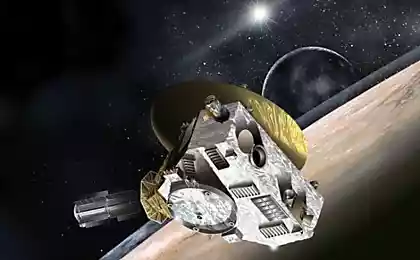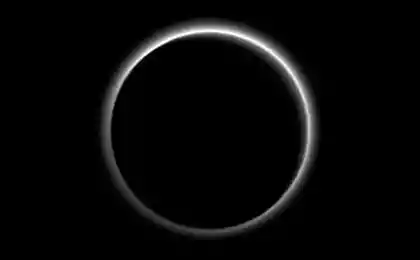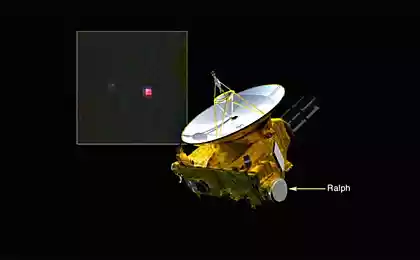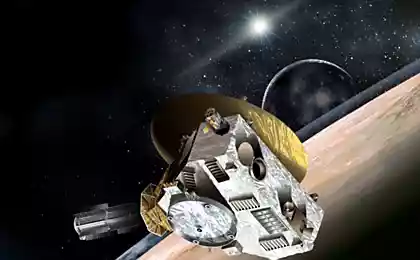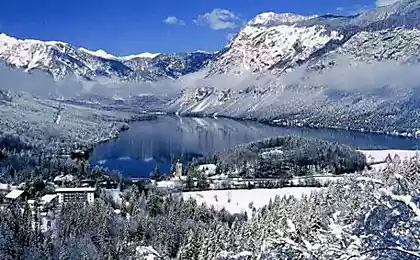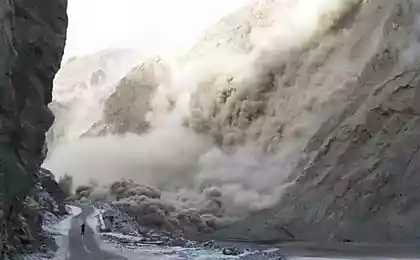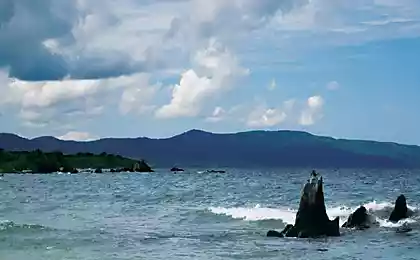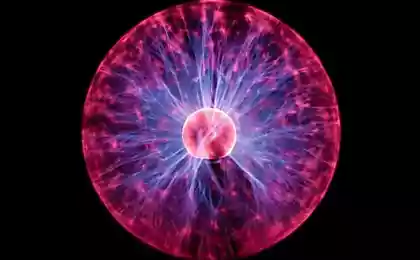712
800 thousand years ago on Pluto may exist rivers and lakes
However, it was not water but liquid nitrogen

Now New Horizons probe is at a distance of 300 million kilometers from Pluto, continuing to transmit valuable information about the planetoid. A number of data sent to the device recently, may be evidence of the existence of Pluto's surface rivers and lakes of liquid nitrogen, many thousands of years ago.
These data - pictures of Pluto's surface (high-resolution photo), plus some data on the orbit of the planetoid. So, the "Channel" network, which can be seen in some photographs the surface of Pluto is likely to set flowing rivers of liquid nitrogen. Nitrogen ice still on the surface, including the already mentioned "channels" and the former lake.
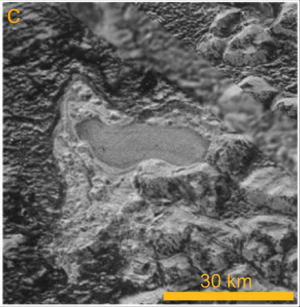
"We are seeing what could well be an ancient lake," - said Alan Stern, one of the participants in New Horizons team. "It is a very flat area, because there is cold liquid nitrogen is at a certain level", - commented the scientist. According to him, it is difficult to offer a different model, which would explain the modern morphology. But why now all frozen Pluto, and how climate planetoid could once be so warm that on the surface could be liquid nitrogen? All the matter in an unusual rotation of Pluto.
Now own axis of rotation of Pluto is at an angle of 120 degrees to the plane of the orbit of the planetoid. The Earth, the figure is 23 degrees. For this position of Pluto indicates the predominance of tropical climate. Around 800,000 years ago, the angle of inclination of the axis of proper rotation of Pluto was 103 degrees, and the planetoid climate was significantly different from the modern, the climate was slightly warmer. This means that the temperature of the surface of Pluto at that time could be higher and the pressure was higher than that provided the possibility of existence of liquid nitrogen.
Over time, the inclination of the axis of the planetoid has led to the displacement of the tropics toward the poles of Pluto, the Arctic regions at the same time moved in the direction of the equator. Pluto has become significantly cooler and nitrogen frozen. Thus there is the likelihood that liquid nitrogen is under a crust of ice to the nitrogen where lakes had been used.
Plus, experts say the movement of ice on Pluto, so that the planetoid - is not "dead" object. Interestingly, the addition of nitrogen, there is also a water ice. NASA got a better distribution of the image of ice on the surface of Pluto, combining two photographs with an infrared instrument New Horizons. This operation is allowed to "strengthen" the signs of the presence of water ice at the same time, "drowning out" other "spectral signature". As a result, we can see how much is water ice - blue color shows the placement of frozen water on Pluto
.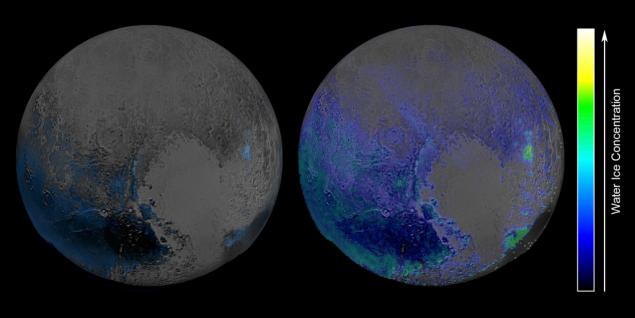
The interest of scientists is not only Pluto and its moon Charon. According to some NASA scientists, Charon in the distant past may have a subsurface ocean. Over time, he gave a little heat, cooled, and finally frozen. Freezing, a huge mass of water expanded and destroyed the surface of Charon, which existed under the previous volume of the ocean. As a result, today we can see the huge cracks on the surface of the planetoid, the depth of which reached 6.5 kilometers.
Source: geektimes.ru/post/273146/

Now New Horizons probe is at a distance of 300 million kilometers from Pluto, continuing to transmit valuable information about the planetoid. A number of data sent to the device recently, may be evidence of the existence of Pluto's surface rivers and lakes of liquid nitrogen, many thousands of years ago.
These data - pictures of Pluto's surface (high-resolution photo), plus some data on the orbit of the planetoid. So, the "Channel" network, which can be seen in some photographs the surface of Pluto is likely to set flowing rivers of liquid nitrogen. Nitrogen ice still on the surface, including the already mentioned "channels" and the former lake.

"We are seeing what could well be an ancient lake," - said Alan Stern, one of the participants in New Horizons team. "It is a very flat area, because there is cold liquid nitrogen is at a certain level", - commented the scientist. According to him, it is difficult to offer a different model, which would explain the modern morphology. But why now all frozen Pluto, and how climate planetoid could once be so warm that on the surface could be liquid nitrogen? All the matter in an unusual rotation of Pluto.
Now own axis of rotation of Pluto is at an angle of 120 degrees to the plane of the orbit of the planetoid. The Earth, the figure is 23 degrees. For this position of Pluto indicates the predominance of tropical climate. Around 800,000 years ago, the angle of inclination of the axis of proper rotation of Pluto was 103 degrees, and the planetoid climate was significantly different from the modern, the climate was slightly warmer. This means that the temperature of the surface of Pluto at that time could be higher and the pressure was higher than that provided the possibility of existence of liquid nitrogen.
Over time, the inclination of the axis of the planetoid has led to the displacement of the tropics toward the poles of Pluto, the Arctic regions at the same time moved in the direction of the equator. Pluto has become significantly cooler and nitrogen frozen. Thus there is the likelihood that liquid nitrogen is under a crust of ice to the nitrogen where lakes had been used.
Plus, experts say the movement of ice on Pluto, so that the planetoid - is not "dead" object. Interestingly, the addition of nitrogen, there is also a water ice. NASA got a better distribution of the image of ice on the surface of Pluto, combining two photographs with an infrared instrument New Horizons. This operation is allowed to "strengthen" the signs of the presence of water ice at the same time, "drowning out" other "spectral signature". As a result, we can see how much is water ice - blue color shows the placement of frozen water on Pluto
.

The interest of scientists is not only Pluto and its moon Charon. According to some NASA scientists, Charon in the distant past may have a subsurface ocean. Over time, he gave a little heat, cooled, and finally frozen. Freezing, a huge mass of water expanded and destroyed the surface of Charon, which existed under the previous volume of the ocean. As a result, today we can see the huge cracks on the surface of the planetoid, the depth of which reached 6.5 kilometers.
Source: geektimes.ru/post/273146/
Girls on motorcycles
Scientists for the first time have grown human heart in the laboratory entirely
